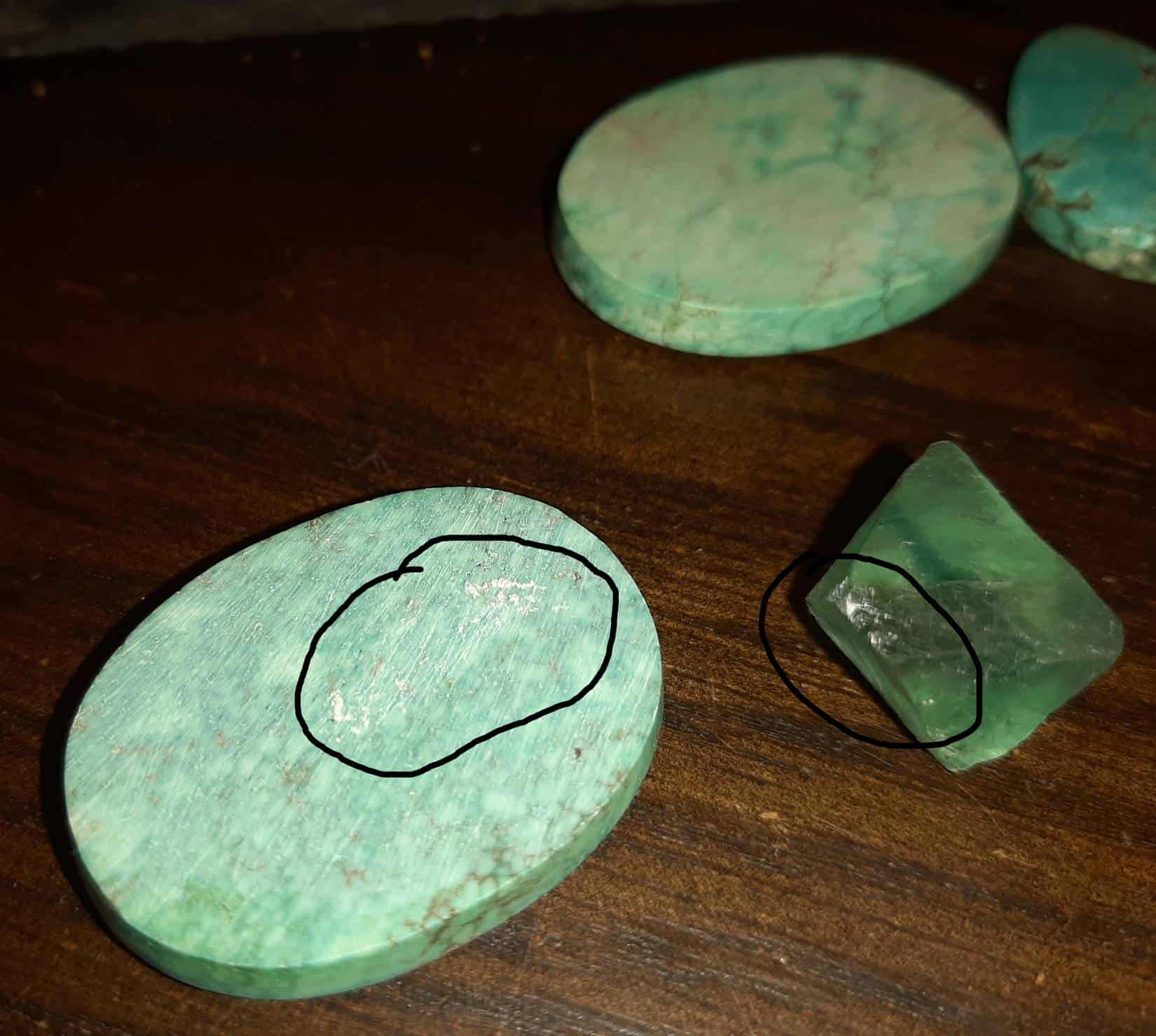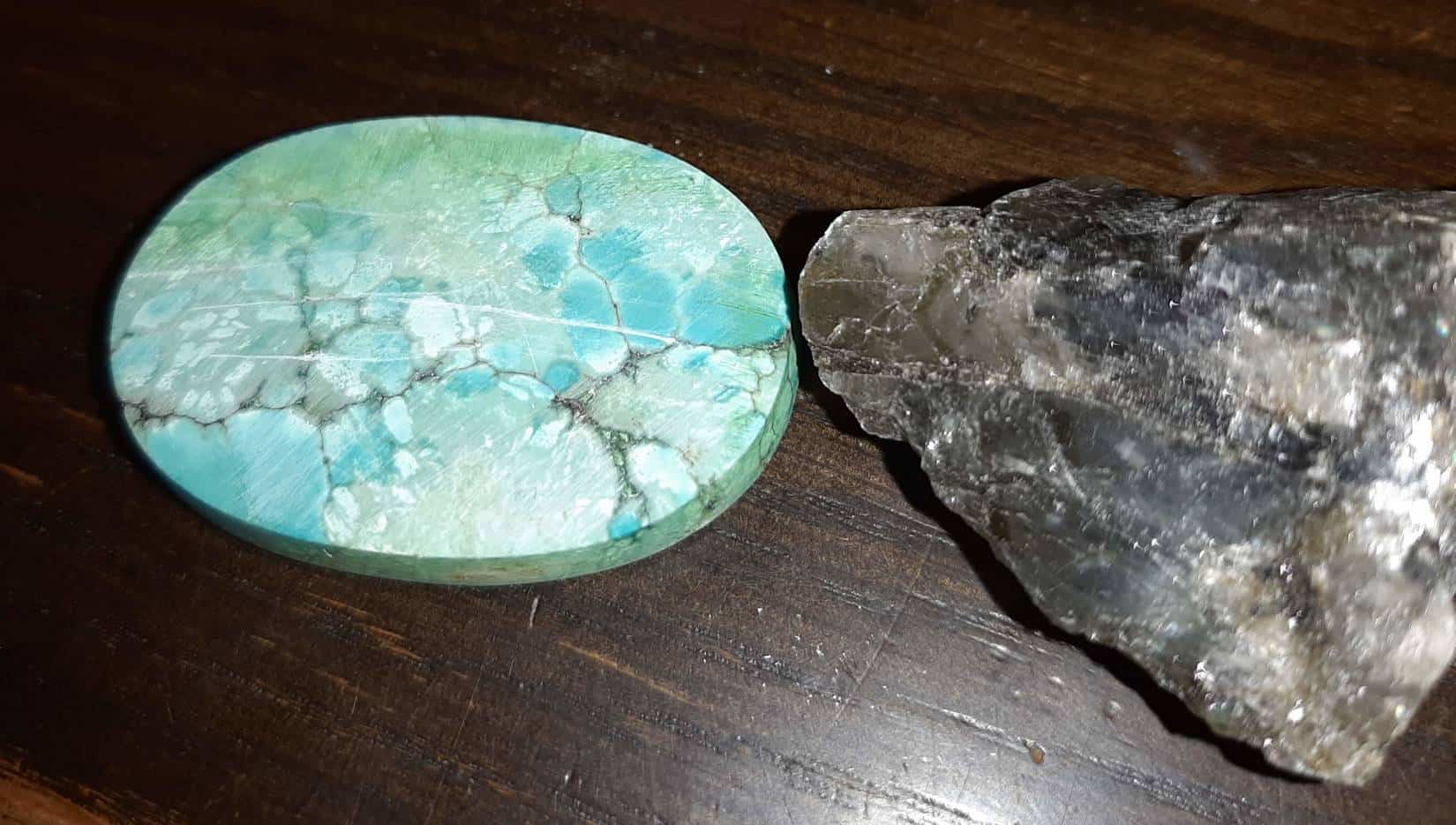So, what is the Mohs hardness scale?
The Mohs hardness scale is, unsurprisingly, a hardness scale, invented by someone called Friedrich Mohs.
Specifically, it defines hardness by the ability to scratch, or to be scratched by other minerals.
This gives us a very quick and easy baseline to narrow down unknown mineral specimens which can be done at home or in the field.
The test was originally invented in 1812, and as such, isn’t entirely accurate anymore – we have discovered serveral minerals harder than Diamond. However, given its simplicity it is great for field work.
A piece of advice..
Many websites online will recommend alternatives to the minerals given for Mohs testing. I do not recommend these.
Common objects are listed, such as your fingernail, a Copper penny, a knife blade, or glass. This may seem like a great way for the hobbiest collector to perform some basic testing, but unfortunately, it isn’t.
A fingernail is listed on a few other websites at 2.5, a copper penny at 3, a knife blade at 5.5 and glass at 6-7.
Now, the first and most important thing to note about this is – everyone is different. My fingernails may be softer than yours, harder than someone elses. I can definitely scratch Soapstone with my fingernail, which ranges from 1-4 on the Mohs scale, depending on the level of Talc it contains.
A Copper penny may be different in your country to mine, or to whomever gave out that piece of advice. In the UK, Copper coins minted before 1992 are 97% Copper – after 1992 they are electroplated Copper over Steel. American pennies (one cent) are Copper plated Zinc.
Knife blades, too, have variations – a stainless steel blade will be drastically different to a tool steel blade.
Given that the Mohs scale is generally used as a tool to narrow down a mineral specimen, it seems that introducing any unnecessary variables should be avoided wherever possible.
What minerals are used?
The original Mohs scale is as follows:
- Talc
- Gypsum
- Calcite
- Fluorite
- Apatite
- Feldspar
- Quartz
- Topaz
- Corundum
- Diamond
So how do I do a test?
Down to basics, the real point of the Mohs test is to tell you approximately how hard a specimen is.
If you had an unidentified specimen that you expected or thought might be Amethyst, you’d look up the Mohs hardness level of Amethyst – online or in a reference guide. Amethyst is, of course, a type of Quartz – with a hardness of 7.
This means that Orthoclase (6) should not be able to scratch it, Quartz (7) may be able to scratch it, and Topaz (8) would be able to scratch it. Nothing under hardness 7 should be able to scratch Amethyst, and everything over 7 should be able to.
This is useful in distinguishing a piece of Fluorite from a piece of Amethyst, as Fluorite is a 4 on the scale and would be scratched by materials Amethyst would not.
Can you show me an example?
Yupyupyup! These images were taken for another article I’m writing, about testing fake Turquoise – however, it made more sense to have the Mohs testing article written first.
Turquoise is a frequently faked stone, naturally occuring at round a 5-6 on the scale.
The two most common fakes for the material are Howlite (3.5), and Magnesite (3.5-4.5).
This means that if my piece of ‘Turquoise’ can be scratched by a piece of Fluorite (4) it is almost certainly one of these two impostor minerals!
If it can be scratched by Apatite (5) it may be authentic, or it may be a harder piece of Magnesite. I realise 4.5 and 5 are quite different, but ideally for testing fully, we do not want to purely rely on Mohs tests.
The marks you can see are the dust from the Fluorite!
The results I had here would indicate a hardness between 5 and 6.5. This is right in the range for Turquoise, so I would perform further tests on these pieces – a specific gravity test and a refractive index test should clarify these results.
With other materials, other tests may suit better – this is purely an example to show you how to do Mohs testing.





Hello – have you created the Mohs Test Kit yet?
Thanks
I have: https://albionfireandice.co.uk/products/mohs-hardness-testing-kit/